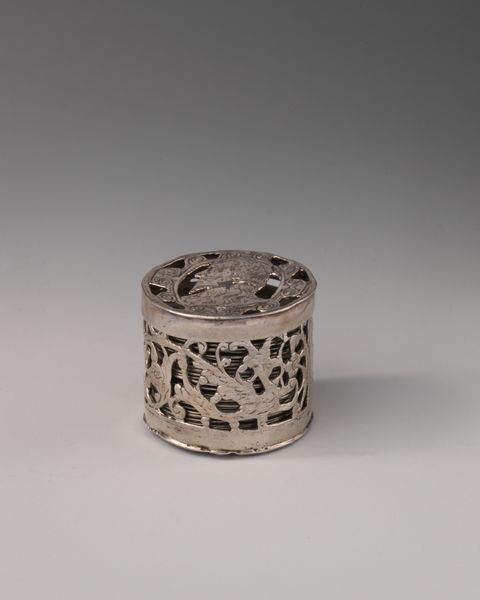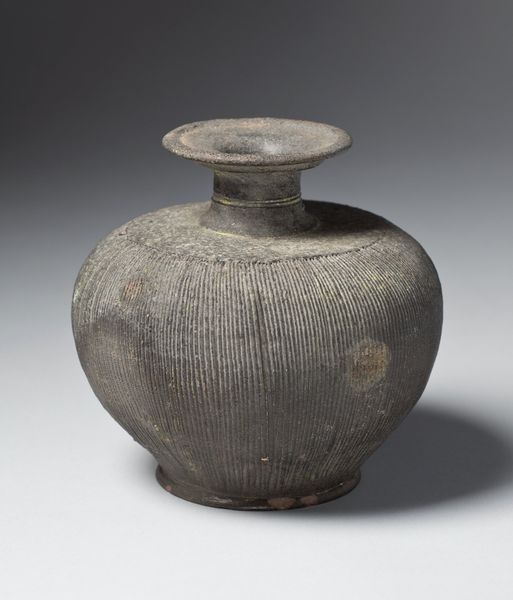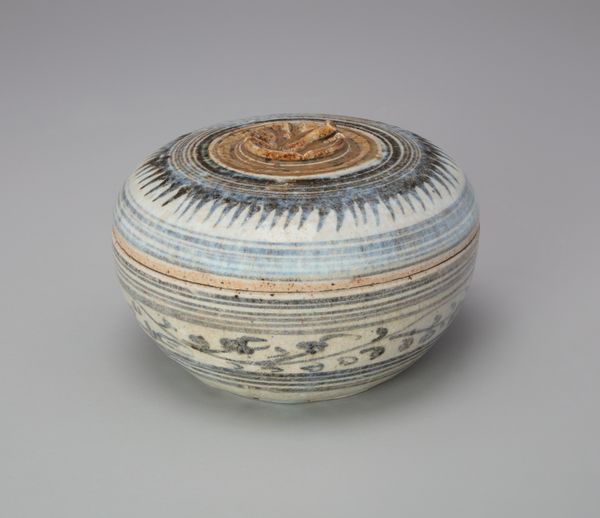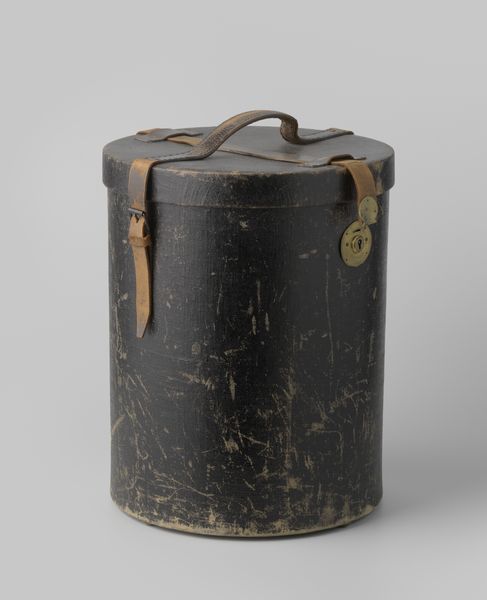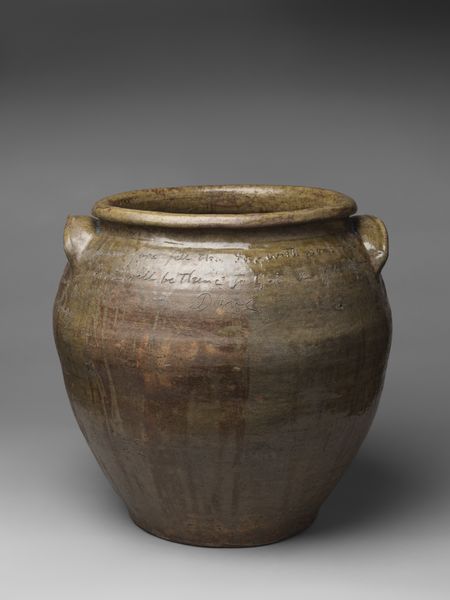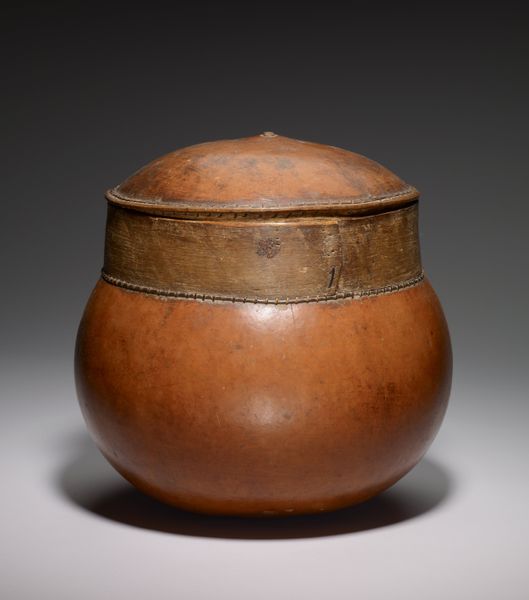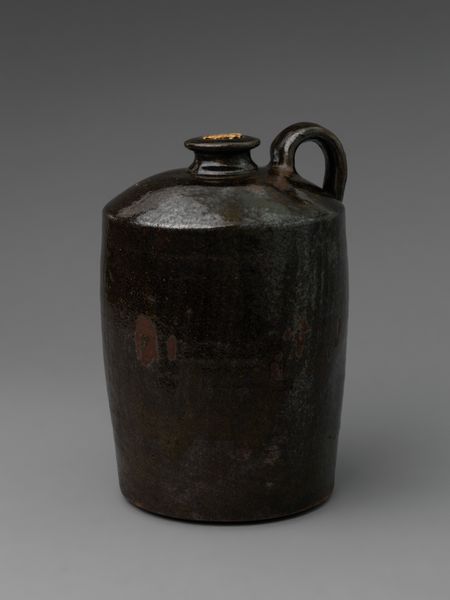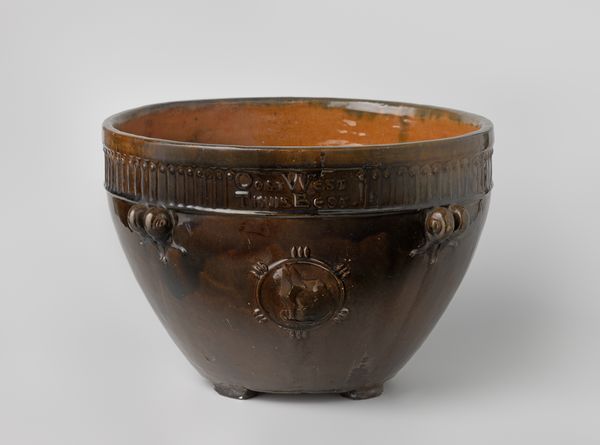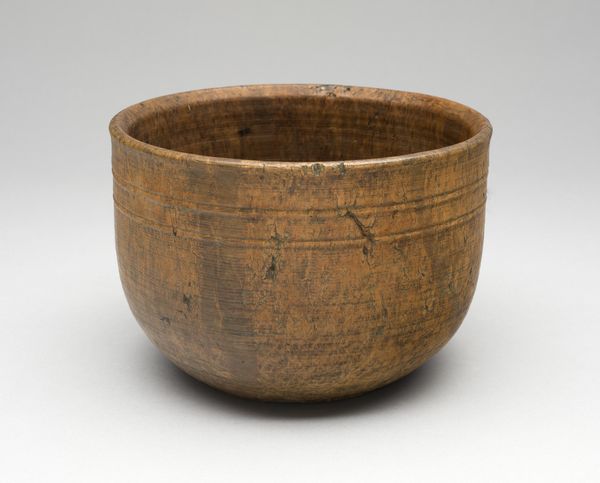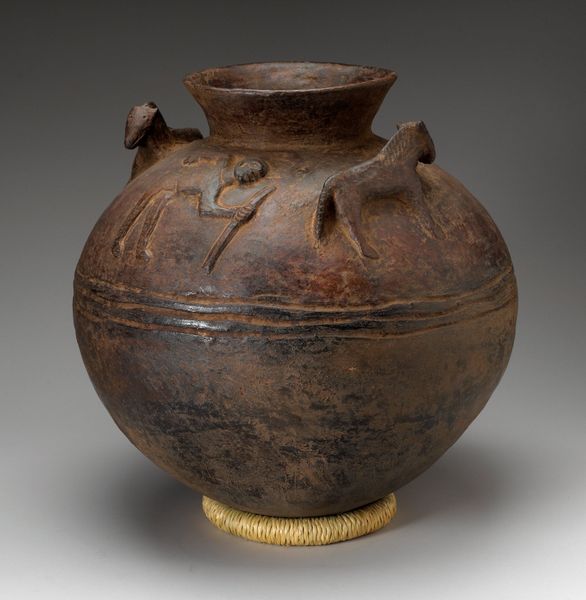
drawing, print, ceramic
#
drawing
# print
#
asian-art
#
landscape
#
ceramic
#
ukiyo-e
#
ceramic
#
miniature
Dimensions: H. 5 3/4 in. (14.6 cm); Diam. 5 3/4 in. (14.6 cm)
Copyright: Public Domain
Editor: So, this is a water jar crafted by Ogata Kenzan between 1695 and 1715. It's currently held at the Met. It's… unexpectedly charming. A simple ceramic jar, but adorned with these almost naive landscape scenes. How do you interpret this work? Curator: The key is in understanding the material conditions and production. This isn't just a functional object; it represents a dialogue between "high" art, as represented by painting traditions evident in the landscape depiction, and "low" art of functional pottery. Editor: Could you elaborate? Curator: Kenzan was from an artistic family. Think about the labor involved – from the potter shaping the clay, the grinding and application of pigments, to the artist who then paints the scenes. Kenzan, coming from privilege, is making these functional objects into artworks that have painting on them, but also would have been sold or given as a gift to the privileged of the time. It blurs the lines. What purpose did this object have and how much did social status impact what a normal utilitarian item would cost. It all connects to larger systems of production and social relations. Editor: So you're suggesting that it challenged the status quo by elevating the mundane, forcing us to consider labor and how things get made and who gets them. Curator: Precisely. By imbuing a functional object with artistic merit, he challenges conventional boundaries. He makes us question our preconceptions about art, class, labor, and consumption in early 18th century Japan. Editor: I guess I was looking at it as just a pretty jar, but it’s so much more layered when we consider it in context. I’ll have to remember to think beyond the visual next time and start to consider the forces that create it and put in motion how something gets distributed in society. Curator: Exactly. We're looking at more than just a water jar; we’re looking at a material object embedded in a social, political and economic environment.
Comments
No comments
Be the first to comment and join the conversation on the ultimate creative platform.
